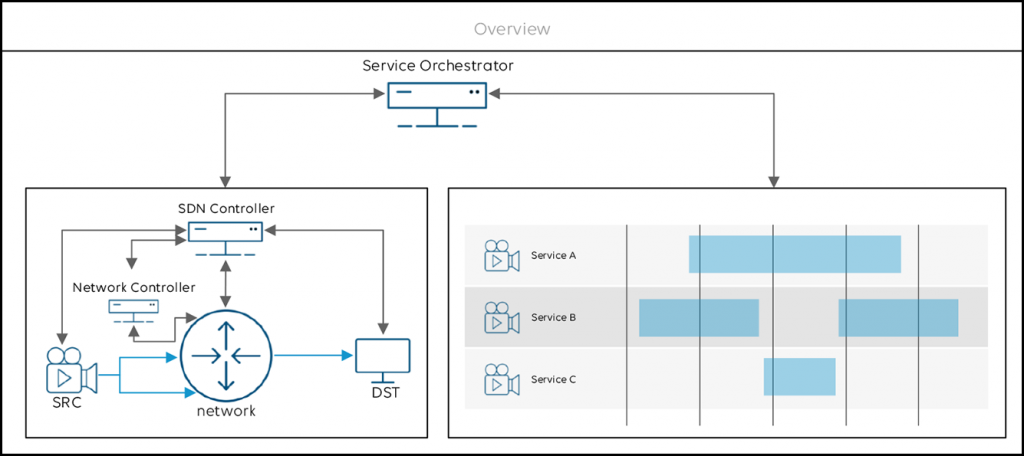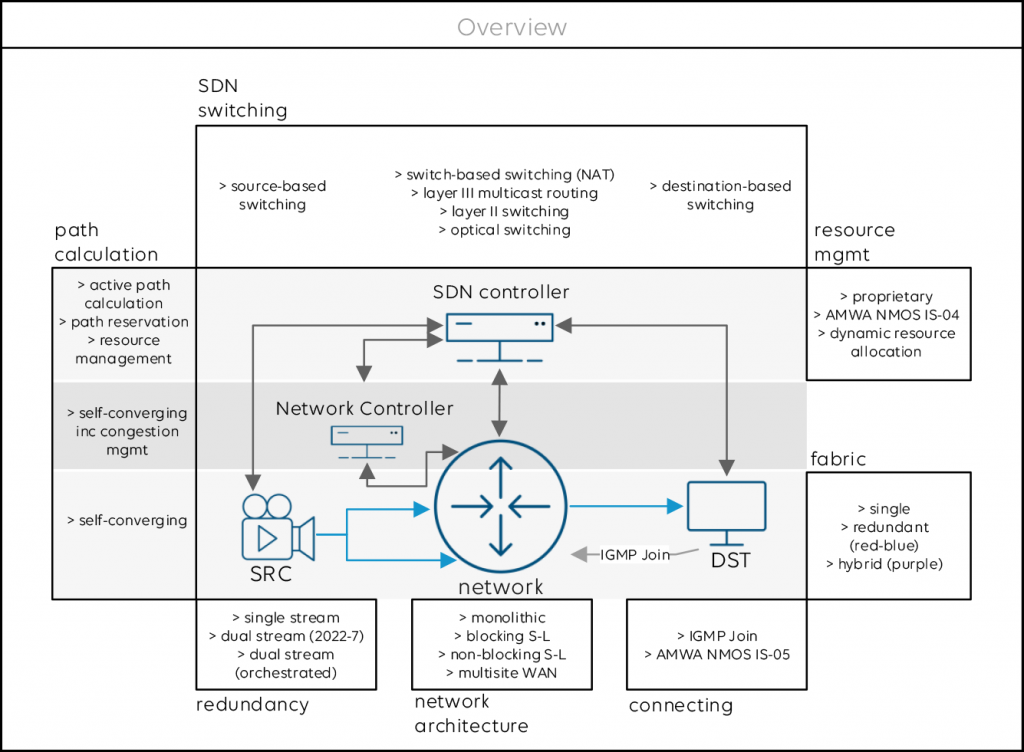Software-Defined Networking (SDN) is commonly defined as a technology approach for network management where the management and control plane gets decoupled from the data plane. Instead of using the network intelligence of each switch separately, SDN centralizes the latter into one component: the SDN controller. This is also referred to as vertical disaggregation.
Since SDN emerged in 2010, there is a vast landscape of SDN standards, best practices, guidelines and plenty of open-source initiatives out there, all aiming to manage the data and control planes as effectively as possible. SDN was driven largely by service providers deploying large-scale networks for data and broadband services to businesses and consumers – often referred to as SD-WAN. Today, similar disaggregation is taking place in media networks with the prime goal of delivering highly demanding video flows in a flexible, predictable and reliable way. With the move from SDI to IP, traditional SDI routers are replaced with highly flexible and interoperable switch fabrics and IP edge devices, a flexibility and agility needed by any media company going through a digital transformation.
As many of the existing SDN protocols – think of OpenFlow, for example – and frameworks were not specifically designed for the it, the media industry has been on a quest to fill in the gaps related to e.g. onboarding and management of resources, managing network capacity, taking care of resiliency, fabric software maintenance, and much more.
Equally important, SDN networking is not only about controlling the data plane. In a media context, operational practices to match the new technologies are key to success. The complexity of those networks, the fact that there is no single standard out there and that many standards are still evolving, but also the cost for infrastructure and the education of staff that comes with those investments leaves a lot of room for uncertainty. This white paper explains how to build an SDN solution for media, and discusses your options and possibilities. As there is not a single blueprint that fits everyone’s needs, each deployment will be (at least) slightly different. This white paper will help you to make the right decisions upfront.
In the white paper, we differentiate between the following parts in an operational SDN environment:
SDN controller
The SDN controller is responsible for establishing a connection between a source and a destination. To achieve that, the SDN controller either communicates with the source devices, the network or the destination devices, or a combination of them. There are also network controllers on the market that are more limited, and that focus mainly on controlling the network, less on managing the media edge devices. They are often focused on one specific vendor or technology.
Service orchestrator
A service orchestrator, such as DataMiner, adds in-depth monitoring and a time dimension on top of the SDN controller. It allows you to schedule resources beforehand and enables a prediction and allocation of the required network capacity needed in the future. Think of event scheduling, OU transmission scheduling, etc. A full-stack monitoring and management solution is needed for a smooth operation in your media network.

The differences
Let us line up the main differences between an SDN controller and a full-service orchestrator:
| SDN controller | Service Orchestrator | |
| Real-time (ad-hoc) switching | X | X |
| Scheduled switching with bandwidth guarantee | X | |
| Ad-hoc capacity check | X | X |
| Capacity planning reservation (events, OU) | X | |
| Full-stack monitoring | X | |
| Orchestration and deployment | X | |
| Zero-touch onboarding of equipment | X | |
| Single vendor, single domain control | X (typically) | X |
| Multi-vendor control | X |
As we can see, a full-service orchestrator really goes a step further than an SDN controller. It adds all aspects you need to smoothly operate your SDN environment. Being able to reliably control data sources from any possible vendor, performing secure onboarding and full-stack monitoring are essential here.
The paper focusses on the actual SDN switching, done in the network controller and SDN controller. Different aspects of this SDN control are switching, path calculation, network architecture, resource management, connections and redundancy. In the next figure, you can find an overview.
